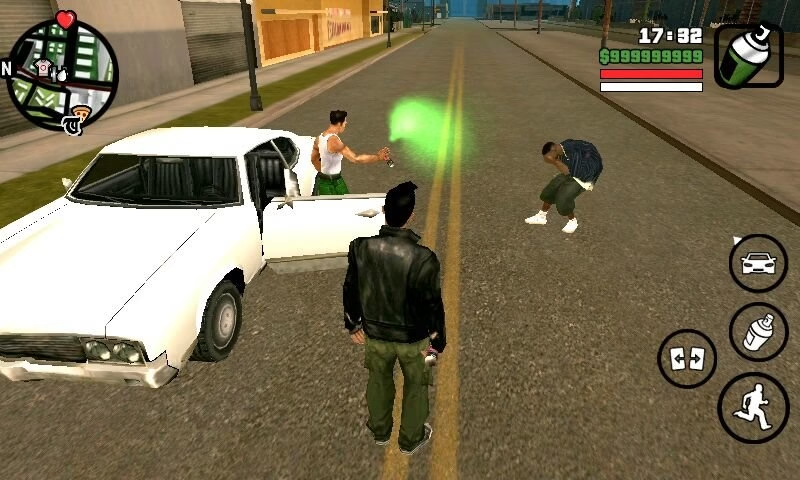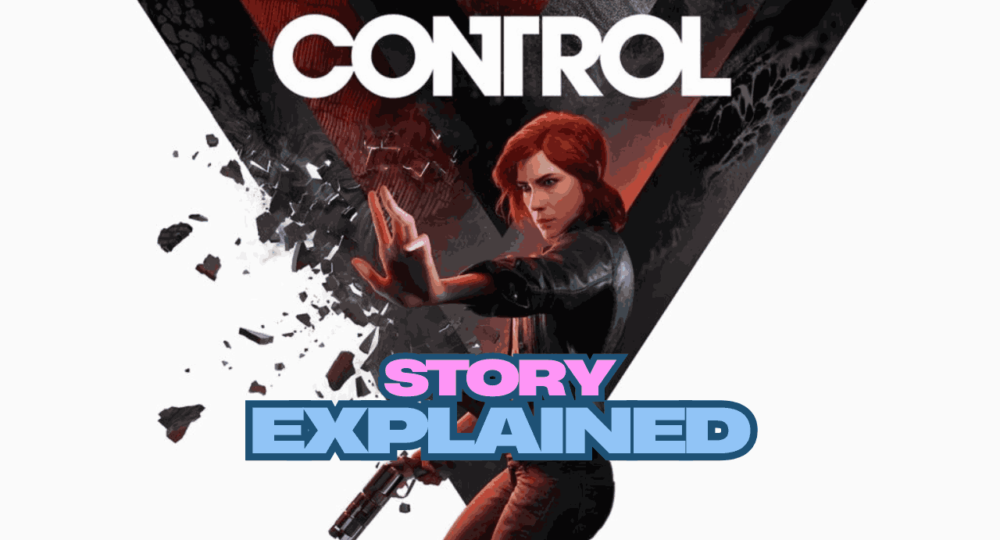
What Really Happened in Control Game Story
Have you ever played a game so captivating that you found yourself thinking about it after putting down the controller? Remedy Entertainment’s Control is precisely that kind of experience—a labyrinthine narrative wrapped in paranormal mysteries and bureaucratic enigmas that left players both mesmerized and perplexed.
Control game story – a story worth remembering.
When Jesse Faden walks through the doors of the Federal Bureau of Control (FBC) and into the impossibly architecture-defying Oldest House, she steps into one of gaming’s most unique narrative experiences, one that garnered widespread critical acclaim while deliberately leaving players with questions that linger like whispers in the corridors of the brutalist headquarters.
Understanding the Control game story requires revisiting the lore—a journey as rewarding as it is challenging. In this games explained blog, we’ll peel back the layers of this paranormal onion, examining not just the main campaign but also its essential expansions: The Foundation and AWE – the entire Control game story.
If you enjoyed my blog i.e. Doom Slayer uniqueness, you’ll appreciate this too. A deeper dive into what makes Control game story a masterpiece. Let’s unravel what really happened in Control game story.
Setting the Stage: The Oldest House and the FBC
The Oldest House in Control Game Story Explained
The Oldest House defies conventional understanding of physical space. As a Place of Power—a location where reality behaves differently—it exists as a brutalist skyscraper in New York City that most people simply cannot see or choose to ignore due to a perception filter. Inside, the building reveals its true nature: a vast, constantly shifting labyrinth that operates on principles far removed from Euclidean geometry.
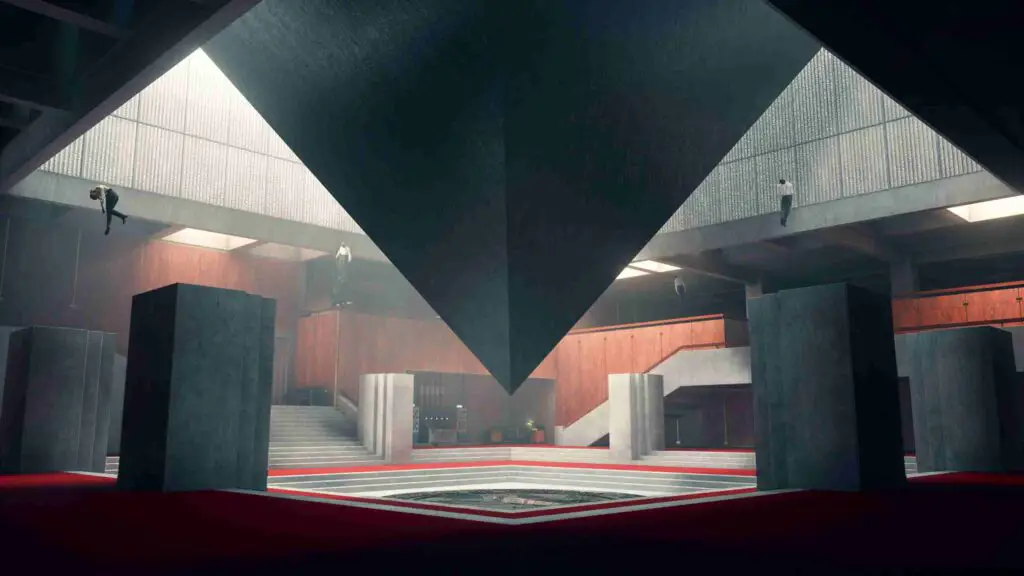
The architecture itself is alive in a sense, rearranging corridors, generating new rooms, and occasionally “breathing” as sections expand and contract. What appears as a simple office building from the outside contains impossible spaces within—endless staircases, rooms that shouldn’t physically fit, and entire departments that seem to exist in different dimensions altogether. This shifting nature isn’t random but responds to rituals, focuses of attention, and the collective unconscious beliefs of those inside.
The Oldest House serves as a natural magnet for Objects of Power and Altered Items—everyday objects imbued with paranatural abilities. These objects gravitate toward the building like moths to a flame, as though the House calls to them across dimensions. The FBC has documented numerous cases of these items appearing spontaneously within the building’s confines, often bringing chaos until properly contained.
Perhaps most fascinating are the Thresholds within the Oldest House—points where our reality thins and allows passage to other dimensions. The most notable is the Oceanview Motel, a liminal space acting as a crossroads between dimensions. Others include Black Rock Quarry, a source of the reality-resistant material used for containment, and the Ashtray Maze, a pocket dimension that can only be navigated with specific paranatural protection. These Thresholds reflect the building’s nature as not just a location, but a nexus of realities, something unique about Control game story.
The Federal Bureau of Control (FBC)
Formed in the early 1960s following several high-profile paranatural incidents, the Federal Bureau of Control operates with a singular mission: to seek out, study, and contain phenomena that violate natural law. Unlike other government agencies that might deny the existence of the paranatural, the FBC embraces and studies it, operating under the philosophy that understanding these anomalies is the first step toward protecting humanity from them.
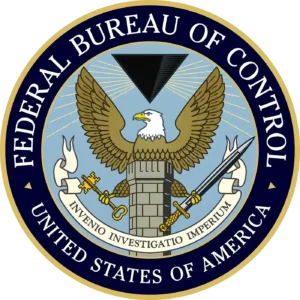
At the helm of this secretive organization stands the Director, a position filled not through conventional promotion but through possession of the Service Weapon—an Object of Power that chooses its wielder. The Director answers only to a mysterious entity known as the Board, which communicates through the Hotline, another Object of Power. Below the Director, the Bureau’s structure resembles a typical government agency with departments specializing in research, containment, security, and administration, though each division deals exclusively with phenomena beyond scientific understanding.
In Control game story, the relationship between the FBC and the Oldest House began when the Bureau discovered the building in the 1960s. Recognizing its paranatural significance, they quickly established their headquarters within its walls, studying its properties while using its natural containment abilities to house their growing collection of dangerous objects. Over decades, the Bureau and the building formed a symbiotic relationship—the FBC learning to navigate and sometimes control the House’s shifting architecture through rituals and procedures, while the House provided them with a secure base of operations naturally hidden from the outside world.
The Hiss Invasion – The Core of Control Game Story
The catastrophic Hiss invasion began with a single misstep. When Director Trench opened the containment chamber housing the Slide Projector—an Object of Power capable of opening doorways to alternate dimensions—he inadvertently released an entity that had been lurking behind one of those doors: the Hiss. Within moments, a resonating chant spread throughout the Oldest House, corrupting anyone who heard it and turning FBC agents against each other.
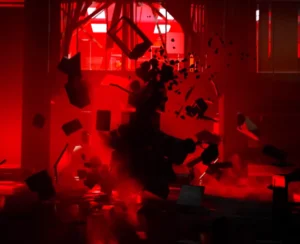
The Hiss in Control game story manifests primarily as a reddish energy or mist that permeates both physical space and consciousness. Those affected become hosts, their bodies distorted and suspended in air while chanting the Hiss incantation—a memetic hazard that spreads the corruption further. Some transformed completely into aggressive entities, while others remained suspended in a state of forced rapture. The higher an individual’s paranatural sensitivity, the more dramatically they transformed, with some becoming powerful conduits for Hiss energy.
As Control game story progress, we can see Jesse Faden enters the Oldest House, she finds an organization in ruins. Communication systems are down, security protocols have failed, and survivors have barricaded themselves in isolated safe zones protected by HRAs (Hedron Resonance Amplifiers)—devices that shield consciousness from Hiss corruption. The upper management has been either corrupted or killed, leaving department heads like Head of Research Dr. Casper Darling missing and Head of Security Simon Arish desperately trying to maintain what little control remains.
The invasion transformed the already strange Oldest House into a nightmarish battleground where former colleagues hunt survivors, reality itself warps under Hiss influence, and the building’s normally controlled shifting has become erratic and dangerous. It’s into this chaos that Jesse steps, unwittingly ready to claim the role of Director and face an enemy that threatens not just the Bureau, but potentially reality itself.
Jesse Faden: The Protagonist in Control Game Story
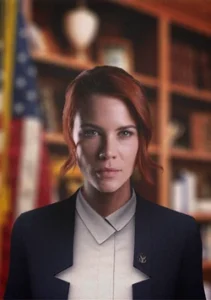
Jesse Faden, in the Control game story, begins in the small town of Ordinary, where as a child she and her brother Dylan encountered a mysterious Slide Projector—an Object of Power capable of opening doorways to other dimensions. When they activated it, a catastrophic Altered World Event engulfed Ordinary. In the chaos, Dylan was taken by the FBC while Jesse escaped, guided by a mysterious entity she calls Polaris that had merged with her consciousness during the event.
For seventeen years in the Control game story, Jesse searched for Dylan, following a psychic call that eventually led her to the Oldest House. Upon arrival, she discovers Director Trench dead from apparent suicide and instinctively takes the Service Weapon—a transforming gun that serves as the Director’s badge of office. The weapon accepts her, instantly making her the new Director of the FBC amid the Hiss invasion.
Thrust into leadership during crisis, Jesse navigates a dual mission: contain the Hiss threatening to break into our reality and find her long-lost brother. Her sudden authority sits uneasily on her shoulders as she struggles to reconcile her distrust of the Bureau with her new role leading it.
Throughout her journey, Polaris remains Jesse’s constant companion—a resonance of light and geometric patterns that guides her through the Oldest House and grants her paranatural abilities including telekinesis, mind control, and levitation. This symbiotic relationship proves crucial, as Polaris shields Jesse from Hiss corruption while empowering her to combat the threat. Their connection represents not just protection but transformation—Jesse is neither entirely human nor entirely Other, but something uniquely positioned to bridge worlds and save the Bureau from destruction.
Key Story Elements and Plot Points
Altered Items and Objects of Power
In Control game story, reality is more malleable than most humans realize. When everyday objects intersect with paranatural forces, they can become either Altered Items or the more potent Objects of Power.

Altered Items are objects that have acquired strange properties but lack consciousness. The Rubber Duck that causes violent telekinetic outbursts when unobserved, the Clock that manipulates time in localized areas, and the infamous Fridge that requires constant observation to prevent catastrophic consequences—all represent the unpredictable ways reality can warp around seemingly innocent items.
Objects of Power, however, are something more—items that have developed a form of consciousness and bond with individuals through rituals. These objects serve as conduits to the Astral Plane and grant their users paranatural abilities. The Service Weapon, morphing between different firearm configurations, serves as both the Director’s badge of office and a potent weapon against paranatural threats. The Hotline telephone allows communication with the mysterious Board and occasionally with the deceased Director Trench. The Slide Projector that started Jesse’s journey can open doorways to alternate dimensions.
Benicoff TV – Object of Power in Control Game Story:
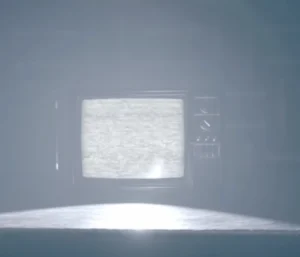
Fridge – Object of Power in Control Game Story:

These items aren’t merely plot devices but represent the core philosophy of Control’s universe: reality is fragile, consciousness shapes existence, and objects can become vessels for powers beyond human understanding. The FBC’s primary mission involves containing these items, preventing them from causing further Altered World Events while studying their properties to better understand the paranatural.
Dylan Faden and the Hiss Connection
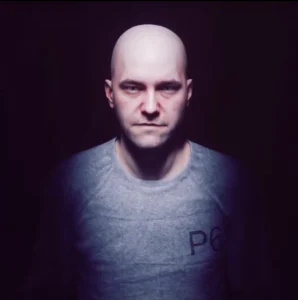
Dylan Faden’s relationship with the paranatural world developed differently from his sister’s. After the Ordinary AWE in Control game story, the FBC identified him as P7, their most promising candidate for Director due to his high paranatural sensitivity. Years of testing, isolation, and what amounted to imprisonment left Dylan bitter and resentful toward the Bureau.
When the Hiss invaded, Dylan didn’t resist—he welcomed it. Having already been in communication with the entity through dreams, Dylan saw the Hiss as liberation from the Bureau’s control. He became the primary conduit for the Hiss, allowing it to spread throughout the Oldest House while remaining coherent enough to maintain his own consciousness alongside the corruption.
Dylan’s tragedy lies in his complex motivations. He genuinely loves his sister and wanted reunion, but his anger at abandonment (though Jesse never stopped searching for him) and years of FBC captivity twisted his perspective. He believes the Hiss will liberate humanity from rules and control—themes that resonate throughout the game. When Jesse finally finds him suspended in the Executive Sector, their reunion is heartbreaking: Dylan is physically present but mentally lost between his own consciousness and the Hiss influence.
Their relationship represents Control game story’s emotional core—two siblings who experienced the same paranatural event but were separated by circumstance, developing diametrically opposed relationships with power and control. While Jesse seeks to contain chaos, Dylan embraces it, setting them on an inevitable collision course.
The Board and Astral Plane
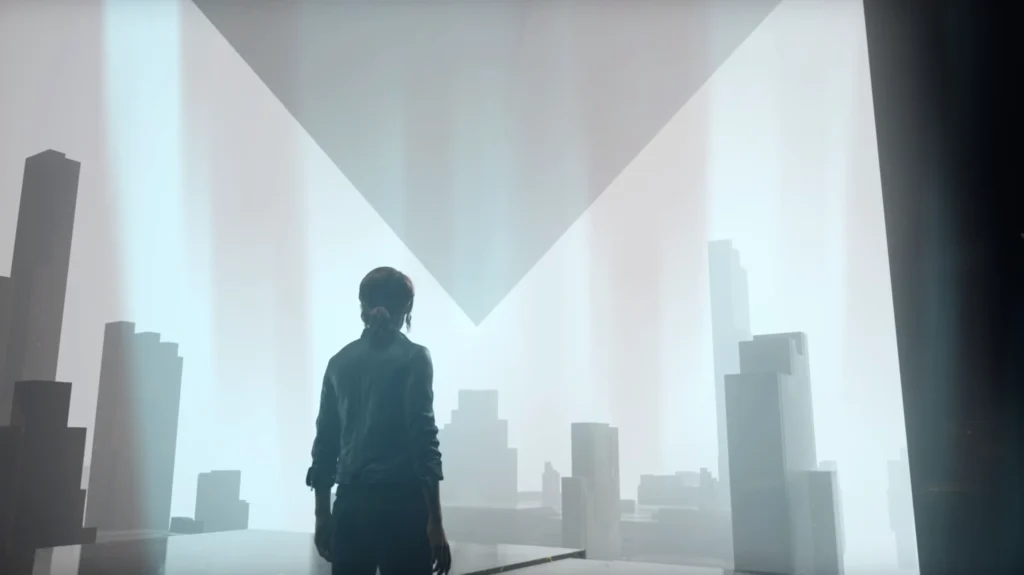
The Astral Plane in Control game story exists as a dimension adjacent to our reality—a stark white void populated by geometric black pyramids that pulse with energy. This plane serves as both a testing ground for Jesse’s abilities and the home of the Board, perhaps the most enigmatic entity in Control’s universe.
Communicating through the Hotline in reversed, simplified language (“You/We/Us give help/assistance/existence”), the Board presents itself as a governing force over the paranatural world. It claims to manage the Oldest House and appoint Directors through the Service Weapon ritual. Despite its apparent authority, the Board’s true nature and motivations remain deliberately ambiguous.
When Jesse communicates with the Board, she enters a mental representation of the Astral Plane where inverted pyramids speak in conceptual language rather than precise words. This communication style reflects the fundamental incomprehensibility of the entity—it may be benevolent, manipulative, or simply so alien that human concepts of morality don’t apply.
The Board’s relationship with the Hiss provides one of Control’s central mysteries. While seemingly opposed to the Hiss invasion, the Board’s reluctance to provide clear information raises questions about whether it truly serves humanity’s interests or simply protects its own domain against a rival force. The pyramidal structures of both the Board and the Hiss suggest a connection that neither entity acknowledges—perhaps two sides of the same paranatural coin, representing order and chaos respectively.
The Hotline and Dr. Casper Darling
The Hotline—a red rotary telephone embedded in a block of black rock—serves as Control’s primary communication device between worlds. Originally created by Dr. Casper Darling, the Bureau’s Head of Research, this Object of Power allows Jesse to receive guidance from both former Director Trench and the Board while navigating the Oldest House.
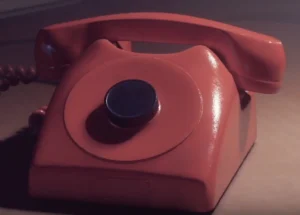
Dr. Darling himself represents the scientific approach to the paranatural—brilliant, eccentric, and ultimately transformed by his discoveries. Through numerous multimedia presentations scattered throughout Control game story, players piece together Darling’s journey from skeptical scientist to true believer. His research into Hedron—an entity from another dimension that serves as the source of Polaris—proved crucial to developing the HRAs (Hedron Resonance Amplifiers) that protect Bureau agents from Hiss corruption.

Darling’s disappearance coincides with the Hiss invasion, but unlike other Bureau leaders, he isn’t found corrupted or dead. Instead, the evidence suggests he entered another dimension through the Hedron chamber, possibly merging with the paranatural forces he had studied. His video messages serve as breadcrumbs for Jesse, explaining crucial elements of both the House and the threat she faces.
The relationship between Darling and Trench in Control game story provides another layer to the narrative—two men approaching the paranatural from opposite perspectives. While Trench represented control and containment, Darling embodied scientific curiosity and experimentation. Their philosophical conflict ultimately contributed to the catastrophe, as Trench’s fear of Darling’s research led him to actions that inadvertently released the Hiss.
DLC Expansions: The Foundation and AWE
The Foundation DLC
The Foundation expansion takes Jesse deep beneath the Oldest House to its literal bedrock, where the building connects to our reality. This cavernous space, filled with massive stone formations and ancient symbols, reveals a crucial truth: the Oldest House isn’t merely a building but an entity that grows from this foundation like a living organism.
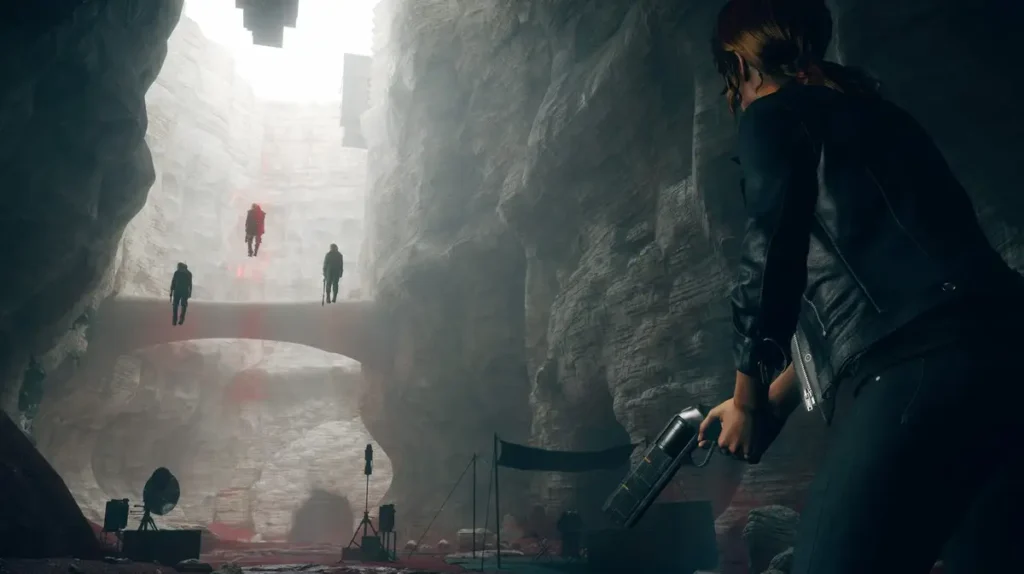
Jesse discovers the Board’s connection to a mysterious inverted black pyramid called the Nail, which anchors the Oldest House to our dimension. When Former—a rogue Board entity—attempts to destroy this connection, cracks in reality begin spreading upward, threatening to collapse the entire Bureau. Armed with new abilities to control rock and destroy crystal formations, Jesse must navigate primordial caverns while learning about the House’s true origins through ancient rituals performed by the first Bureau agents who discovered this place.
AWE (Altered World Event) DLC
The AWE expansion brilliantly bridges Control game story with Alan Wake’s universe as Jesse investigates the sealed Investigations Sector. Guided by cryptic messages from imprisoned novelist Alan Wake, she confronts the monstrous Dr. Hartman—once a psychiatrist, now corrupted by the Dark Presence from Cauldron Lake into a nightmarish entity that flees from light.
This sector houses documentation on various Altered World Events, including the infamous Bright Falls incident where Wake disappeared. As Jesse defeats Hartman using light-based tactics reminiscent of Alan Wake’s gameplay, she uncovers evidence suggesting Wake somehow contacted the FBC from his extradimensional prison within the Dark Place, potentially setting up future crossovers.
Expanding the Lore
Control game story expansions significantly deepen Control’s mythology by revealing both the origins and potential future of its universe. The Foundation establishes how the paranatural world intersects with our reality, while AWE expertly connects seemingly separate stories into a larger “Remedy Connected Universe.” Together, they transform what might have been a self-contained narrative into the foundation for an expansive mythology where creativity, consciousness, and reality itself are inseparably intertwined—proving that in Remedy’s universe, stories themselves may be the most powerful paranatural force of all.
Themes and Interpretations
Reality and Perception
At its core, Control game story questions what constitutes reality by suggesting our conventional understanding is merely the thinnest surface of a much deeper, stranger existence. The Oldest House embodies this theme perfectly—a building that appears as an unremarkable government facility to most passersby while containing impossible spaces within. This architectural impossibility serves as a physical metaphor for the game’s philosophical position: reality is consensus-based, malleable, and fundamentally subjective.
Perhaps most striking is how Control game story treats altered states of consciousness not as delusions but as alternative frameworks for perceiving deeper truths. The janitor Ahti, who speaks in Finnish metaphors and seems to exist partially outside normal reality, often understands the House better than FBC researchers precisely because his perception isn’t limited by conventional frameworks. The Hiss incantation—seemingly nonsensical phrases about thirsting dogs and trembling stars—represents a language that reshapes reality when internalized, suggesting that consciousness itself is the fundamental building block of existence.
Control and Agency – Control Game Story
The ironic tension embedded in the game’s title—Control—provides its central thematic struggle. The Federal Bureau of Control attempts to impose order on paranatural chaos through bureaucracy, containment procedures, and rigidly defined hierarchies. Yet this illusion of control repeatedly shatters throughout the narrative, revealing how tenuous humanity’s grip on reality truly is.
Jesse’s personal journey embodies this paradox. She arrives seeking agency after years feeling controlled by her connection to Polaris and her search for Dylan. Upon becoming Director, she gains apparent authority over the Bureau yet finds herself increasingly bound by responsibilities and expectations. Her powers grant her supernatural agency while simultaneously marking her as different—controlled by forces beyond full understanding.
The Board and the Hiss represent opposing approaches to control—rigid order versus chaotic freedom—with humanity caught between. Dylan embraces the Hiss partially as rebellion against the control structures that imprisoned him, while Jesse enforces containment despite her own misgivings about the Bureau. The game never fully resolves this tension, instead suggesting that perfect control is neither possible nor desirable, and that meaningful agency comes from navigating between extremes rather than eliminating either.
The Nature of the Paranormal
Control game story offers a refreshingly unique approach to the paranormal by blending scientific methodology, bureaucratic documentation, and mythological archetypes. Rather than presenting supernatural elements as entirely separate from science, the game suggests they operate according to consistent principles—just ones that conventional science hasn’t yet incorporated into its frameworks.
This approach manifests in the FBC’s clinical documentation of paranatural phenomena alongside ritual-based containment procedures. Reports meticulously detail observable effects while containment often relies on symbolic actions like reciting nursery rhymes or maintaining specific geometric arrangements. This juxtaposition suggests the paranormal operates according to laws as consistent as physics.
The concept of resonance runs throughout Control as the fundamental mechanism of paranatural interaction. Objects, places, and people develop “frequencies” that can harmonize or clash with others. The Hiss spreads through resonant sound patterns, HRAs protect by creating counter-resonance, and even the Service Weapon bonds with Jesse through resonant compatibility. This framework cleverly bridges scientific concepts (wave functions, frequencies) with more esoteric traditions (sympathetic magic, vibrational energy) to create a cohesive system that feels simultaneously mystical and logical.
Existential Horror
Control game story embraces cosmic horror traditions while reimagining them for the modern bureaucratic age. Unlike conventional horror that relies on darkness and the unknown, Control’s horror emerges from clinical fluorescent lighting and meticulously documented impossibilities—the terror of seeing reality’s fragility exposed through official memoranda and corporate training videos.
Perhaps most unsettling is how Control game story normalizes the abnormal through bureaucracy. The FBC’s response to reality-breaking phenomena isn’t terror but paperwork—filing systems, containment procedures, and interdepartmental memos. This administrative approach to cosmic horror creates a uniquely modern dread: the suggestion that even when facing incomprehensible forces, humans will process them through the same systems we use for tax collection and parking violations. The true horror lies not just in the paranormal but in how institutions render even the most miraculous or terrifying experiences into sanitized reports and redacted documents—stripping meaning from phenomena that exceed human understanding.
What I Think of Control Game Story
After hours exploring the shifting corridors of the Oldest House, piecing together redacted documents, and witnessing Jesse’s transformation from reluctant outsider to formidable Director, I’ve come to appreciate Control game story as one of the most ambitious narratives released.
Remedy has crafted something truly special—a Control game story that rewards curiosity with ever-deepening mysteries rather than simple answers. What makes its narrative so compelling isn’t just its imagination but its confidence in the player’s intelligence, trusting us to connect fragments of lore and interpret symbolism without excessive handholding.
Control game story succeeds in creating a world that feels simultaneously impossible and believable, where bureaucratic procedures and cosmic horror coexist in fluorescent-lit offices. Control game story captures something profound about human nature: our desperate need to impose order on chaos, to categorize the unexplainable, and to find meaning in a universe that may operate beyond our comprehension. Long after the credits roll, the Oldest House continues to shift and transform in your mind, leaving you wondering about the thin boundaries between reality and perception, control and chaos, the ordinary and the extraordinary.
Reference Used for Control Game Story – Control Wiki









